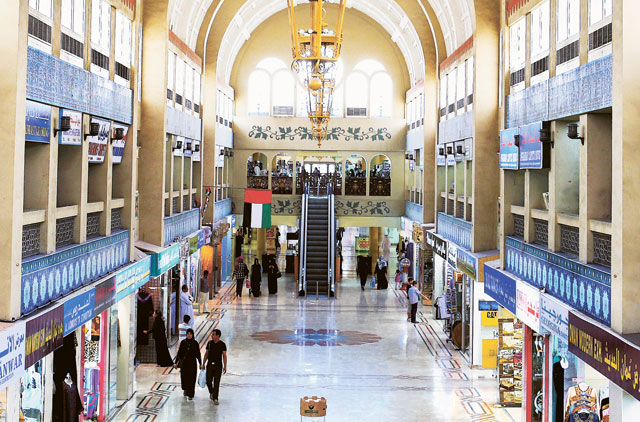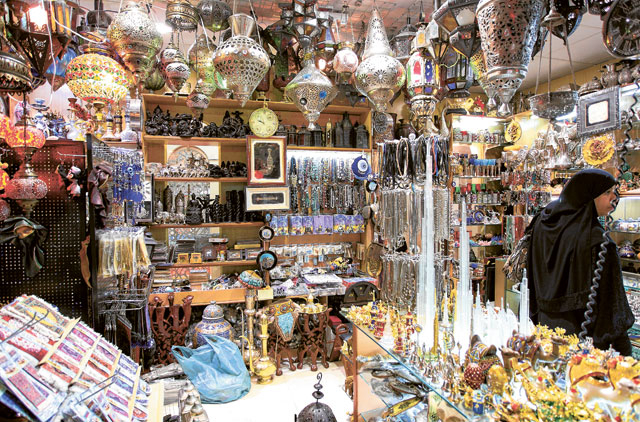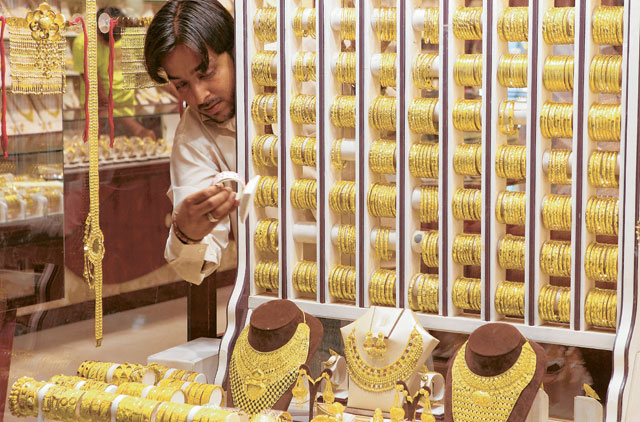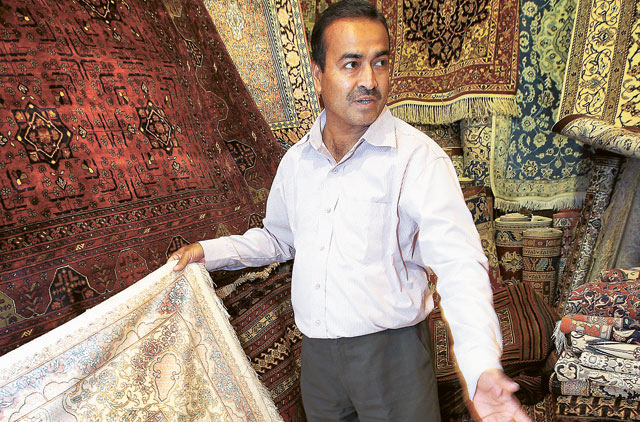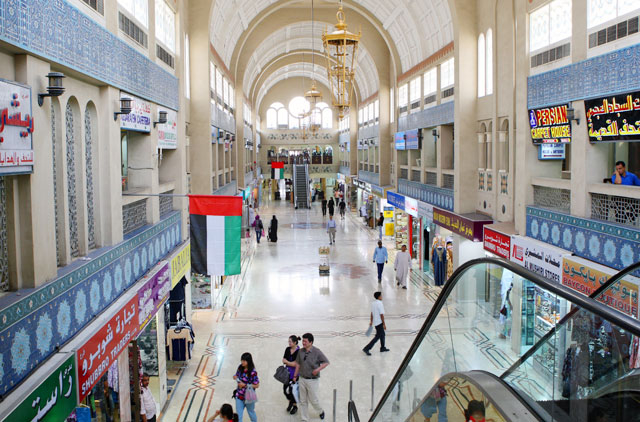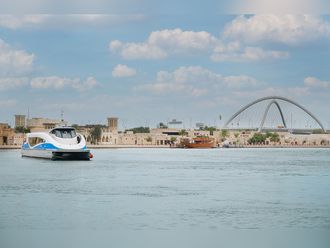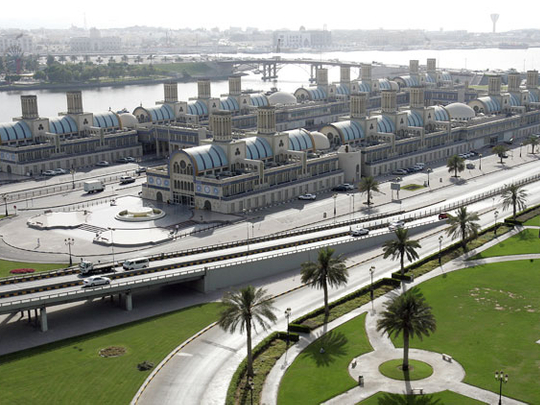
Situated between the bustling roads, the sound of car horns and busy flyovers lies the Central Souq — a tranquil spot that still maintains a certain charm since it was constructed over 30 years ago.
The Central Souq (also known as the Blue Souq due to the colour of its domes) was built in 1978, and was the first infrastructure in the emirate that embodied the idea of a modern shopping centre. To this day, the two-storey souq contains about 600 shops in two wings, and can be seen on every Dh5 note.
The Central Souq displays a majestic flare of Arabic architecture and when it was first opened, residents from the neighbouring emirates of Abu Dhabi and Dubai would make it a point to visit the souq and buy the latest designs in textiles and fabrics. Covering an area of 80 square kilometres, residents from all over the country were soon familiar with the souq's structure and the building became an iconic landmark in the emirate.
The ground floor has mostly modern jewellery, watches and clothing, while the little stores upstairs sell a variety of items such as gold and silver jewellery, pashminas, rugs, traditional coffee pots and home ornaments.
Although the souq continues to host a number of shops and cafeterias, the popularity of the shopping area has slowly dwindled over the years. Families no longer visit the souq as part of an outing when visiting Sharjah, and it has become a place that is now only frequented by loyal customers or tourists.
Mohammad Yasin, the owner of Al Arooj Jewellers, specialises in silver jewellery and has been running the shop since 1980. "I still have many loyal customers and they all know me well because my shop was one of the first to open here. This business was handed down from my grandfather to my father, and then to me," said Yunis, although he points out that his son has no interest in taking over the shop.
Yasin fondly remembers when he first arrived to the UAE in June 1971, and first opened his shop at the Dubai Gold Souq. "The rents were always cheaper in Sharjah, so that's why I changed location. At the time, the Central Souq was very popular and a good place for business."
Vachhani Prakash, who has owned Lata's handicraft and gift shop on the souq's second floor since 1985, said that he has mostly Emiratis and tourists visiting his shop, since it has a reputation of providing unique items that cannot be bought elsewhere in shopping centres.
Prakash buys his products from all countries in the Eastern countries, such as from Morocco, Syria, Egypt and Thailand.
"Most of my products are made from silver and because of the market, prices have gone up and prices have risen. Nowadays nobody's interested in spending a small fortune on home decorative pieces but I don't mind [on] keeping my business running here," said Prakash, who said he was considering opening another branch in a shopping centre in Dubai.
Some of the souq's charm is finding high-end quality products at a bargain, as most shopkeepers are more than willing to lower the price for potential customers.
One of the shops that continues to thrive and has a reputation among local residents is the shop of Ayakub Chaudhry, who sells carpets and rugs from Iran, Kashmir and Pakistan.
"Whatever you are looking for you can find it here. The architecture of the building provides a certain tranquillity that you cannot find anywhere else. Although its not as popular as it used to be, people still visit the souq because it is one of the most iconic landmarks in the city of Sharjah," said Chaudhry, as he pointed out that customers continue to show an interest in one of his most prized items on display, which includes a silk Iranian carpet of 1,000 knots priced at approximately Dh40,000.
As you head away from the silver and handicraft items on the second floor, and head on down to the ground level, the area is mostly filled with shops selling gold jewellery and fabrics. Many of these shops continue to function after 25 years of its launch, and still provides a haven for tourists who seek shelter away from the scorching heat and who are interested in delving into the Arabic theme of architecture.
"When I first opened my shop, there was no central air-condition and because the souq was built with wind towers, the area was naturally cooled down. The place was also very popular when it first opened because it provided customers a place to walk easily and even do some light walking exercise at the same time," said Abdul Gafour Mohammad, 50, an owner of a textile shop.
Mervat Mustafa, who has been visiting the souq on a regular basis for the last four years, said that she enjoyed purchasing her items from this area since it was one of the few places where you can still bargain.
"Wherever you go, the shopping centres all offer the same thing. So I really enjoy coming here twice a week to see what latest items they have, and try to get the best discount possible. I am used to coming here and still prefer it to anywhere else," she noted.
The souq is not only a hit among mothers with children but among elderly men as well, who buy their dishdashas, gotras and their agaal (men's clothing) from shopkeepers that they have befriended over the years. Abdul Kadir Mohammad, an Emirati who has been visiting the area for more years than he can remember, said he enjoys visiting the souq because it is not only filled with shopkeepers but friends as well.
"After so many years, the shopkeepers become your friends so going over to the souq does not seem like a chore but more like an opportunity to visit friends. We catch up on each other's lives, talk about the news around us and it is a place that I find more enjoyable to visit than anywhere else."


